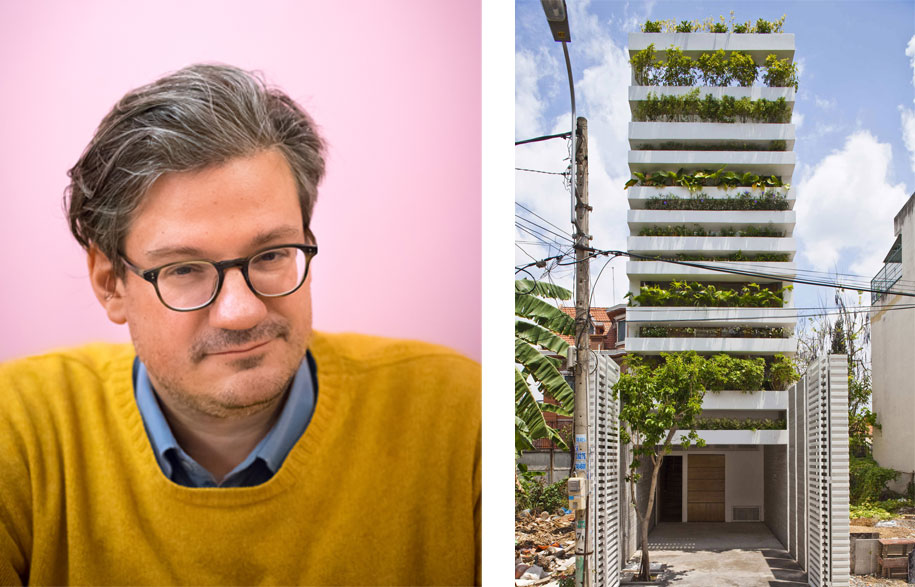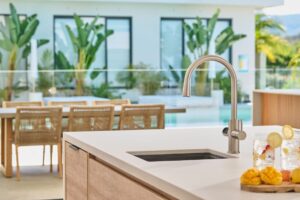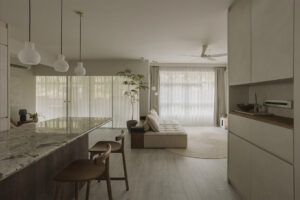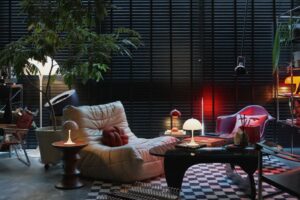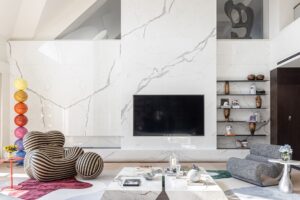Above: Sven Ehmann. Photo by Alex Kroke / Stacking Green house by Vo Trong Nghia Architects . Photo by Hiroyuki Okiand
Habitus: What is a Smart Home?
Sven Ehmann: Following the media these days, it seems as if a smart home is essentially a home full of sensors, controllers, and networked technology. A place that knows us, supports our living, and fixes our misbehaviours occasionally. To some, this sounds like paradise; to others, it probably sounds like hell and total control.
Before combining the two words, I would suggest widening the conversation about “smart homes” in order to better understand what “smart” means and what “home” means today. To me, smart living very much includes a sustainable home. Sustainability is not only influenced by technology but also location, floor plans, building materials used.
In our book Building Better, we document how architects and homeowners work together today to find unique and aesthetically solutions while building environmentally friendly houses. A vivid example is a four-story layered townhouse in Ho Chi Minh City disguises itself behind 12 levels of greenery. A façade composed of planters filled lush vegetation not only serves as horizontal louvers directing light and air into the house, but also a passive cooling strategy upgrading the indoor thermal environment.


Stacking Green from Building Better copyright Gestalten 2015
On the other hand, the word “home” means more than being environmentally friendly or maintainable. Instead, the urban nomads—people among us who move from one place to another—might have several homes where they are emotionally attached to when they travel, work abroad, or visit friends and families. These places have much more to serve than merely high technology. Our recent book The New Nomads features a caravan of trailers and tents who temporarily repurposed the private gardens of Musée du Quai Branly in Paris for a series of public events and programs. Together they transformed the outdoors into a shared living room for impromptu gatherings. This was where they called home.

Nomad by Bureau A from The New Nomads, Copyright Gestalten 2015. Photo: Jack Halloway & Jay Nelson
Habitus: What features are prominent in Smart Homes today? How has this changed over the past 5-10 years?
Sven Ehmann: The most relevant change over the last decade is the digitalization with all its innovations and consequences, but what’s even more important is the transformation in the minds and the awareness of people. Architects, engineers, developers, and homeowners design, build and desire to live in smarter homes.
Habitus: Why is it more important than ever to have consciously designed homes?
Sven Ehmann: We are simply responsible for everything we build and produce, and this has become more obvious and more transparent than before. It is a matter of taste, attitude and survival.
Habitus: Where is the trend towards Smart Homes strongest?
A. There are different levels of innovation around smart living. I would say that the U.S. is strong in developing and marketing the latest high-tech consumer goods, while over here in Germany we have a major focus on sustainable renovation and improved insulation of existing buildings as well as security. Japan seems to be the country that reinvents the bathroom. It’s a global challenge, and there are solutions around the globe as well.

From Building Better, copyright Gestalten 2015
Habitus: What can Australia learn from other countries, and vice versa?
Sven Ehmann: I think each country has its uniqueness as well as universal challenges. Identify the unique ones and share your results while acknowledging the global challenges and collaborating with partners around the world for better solutions.
Habitus: How can we make our homes smarter?
Sven Ehmann: If house owners or inhabitants are smart, interested, open-minded, and are able to criticize, everything else will follow soon.
Gestalten
gestalten.com
Sven Ehmann is a creative director from Berlin. He spends most of his time working with publishing company Gestalten where he edited over 70 books on contemporary visual culture with subjects ranging from information graphics and editorial design, to architecture, interior design, interactive environments, 3D printing, bicycles and food. Sven is most curious about radically new forms of creative expression and currently explores the intersection between design, technology and journalism. Besides that he also works as a curator, lecturer and consultant on aspects of design and innovation.


